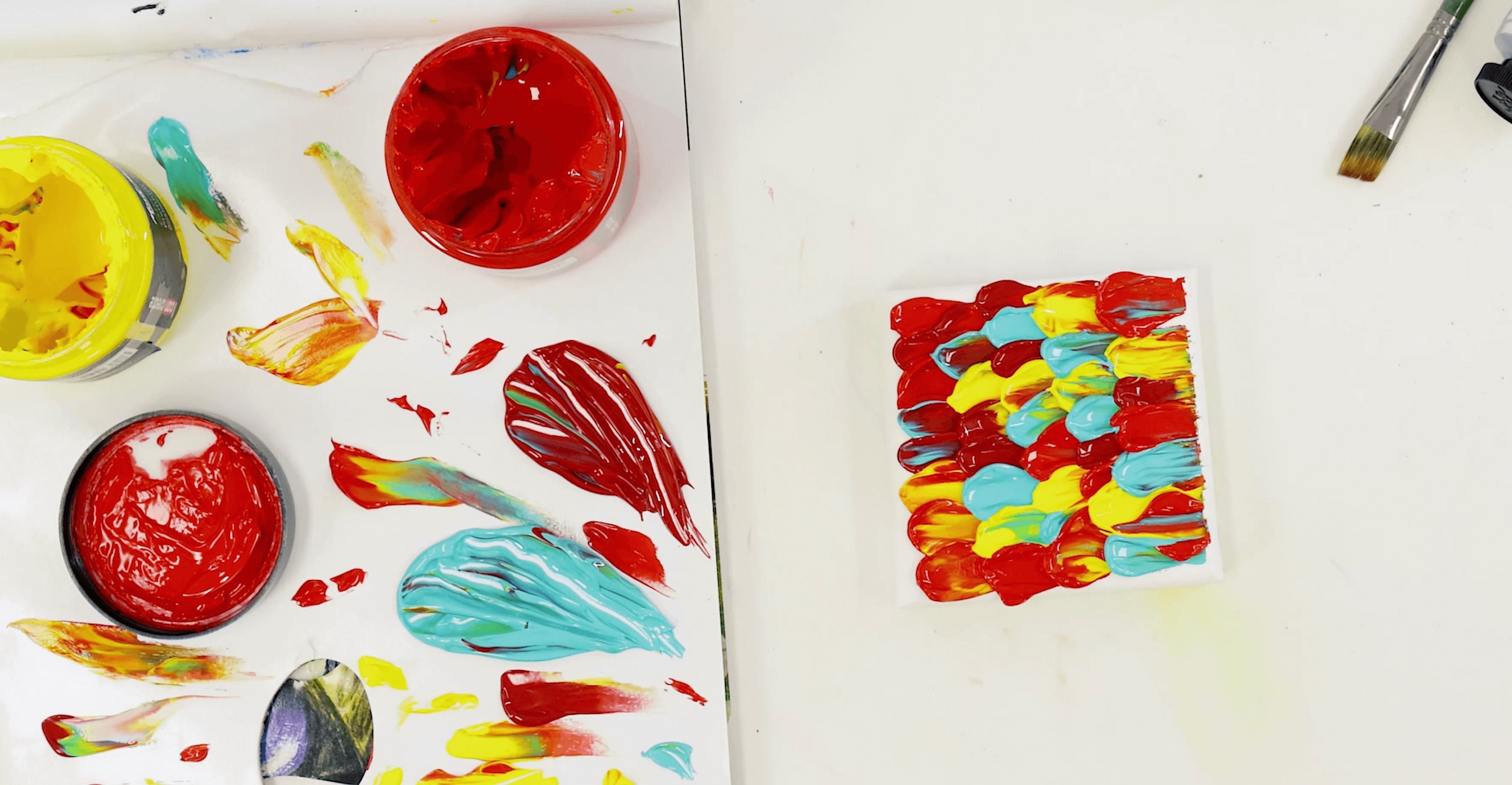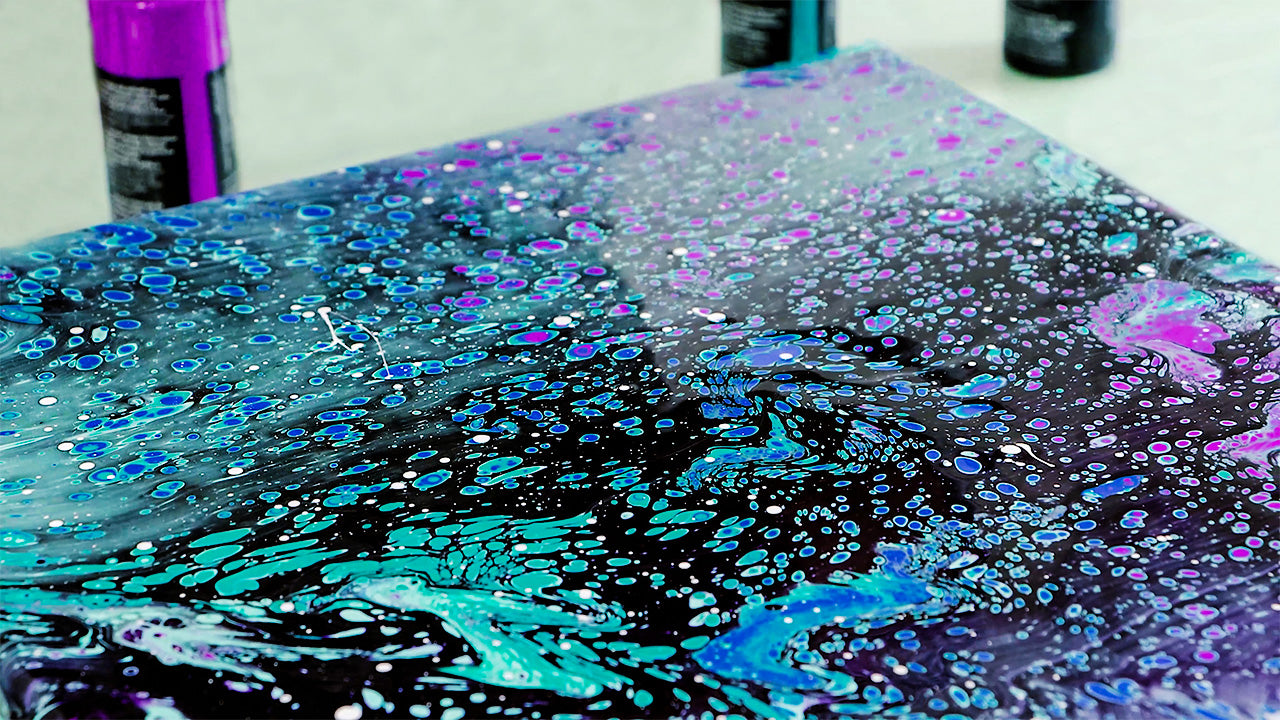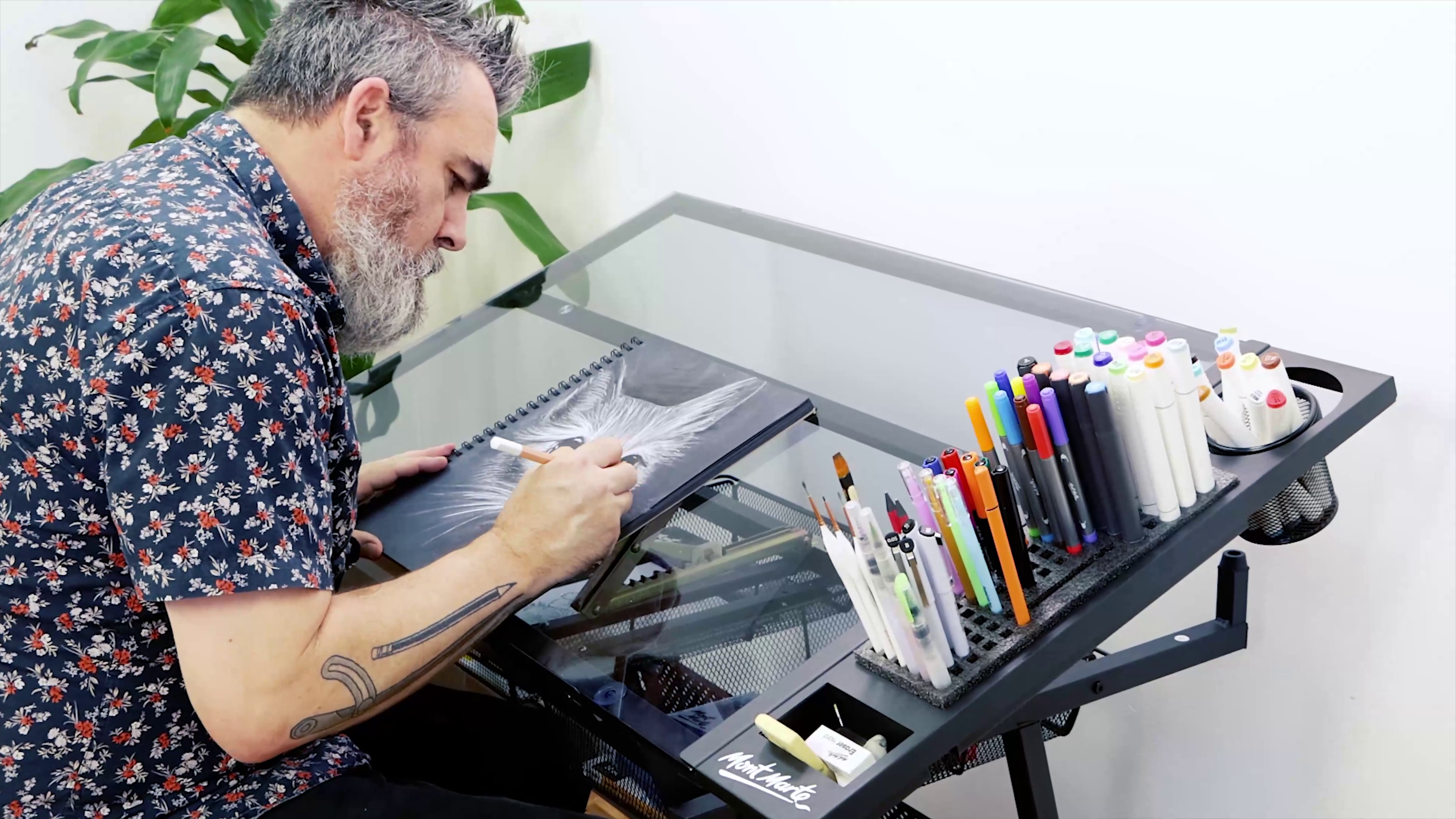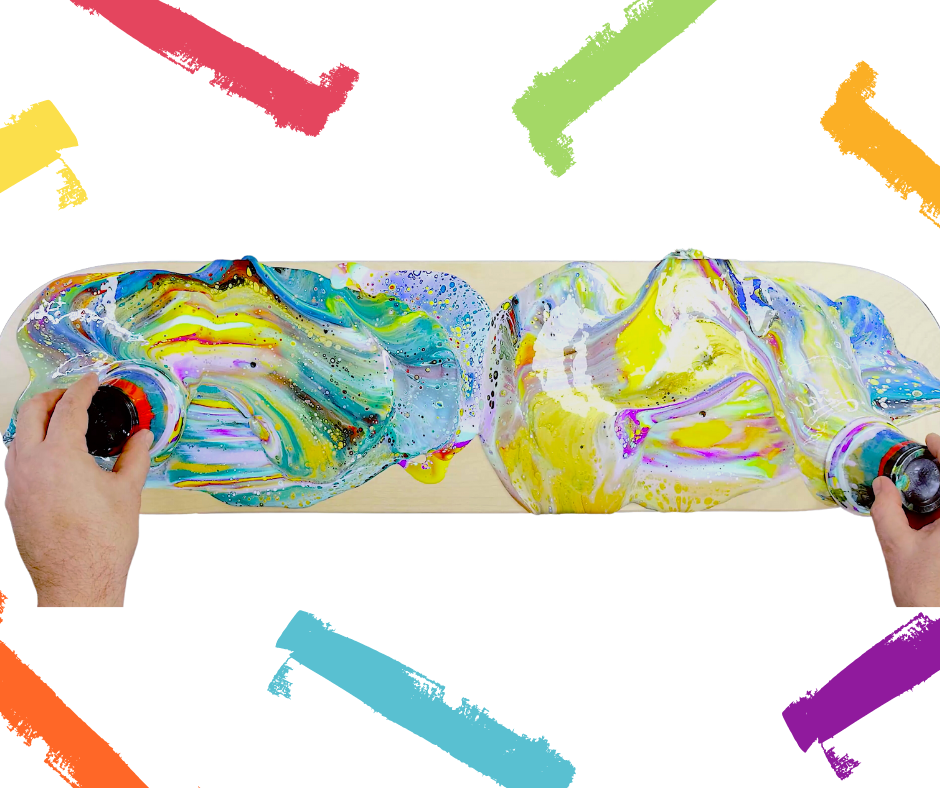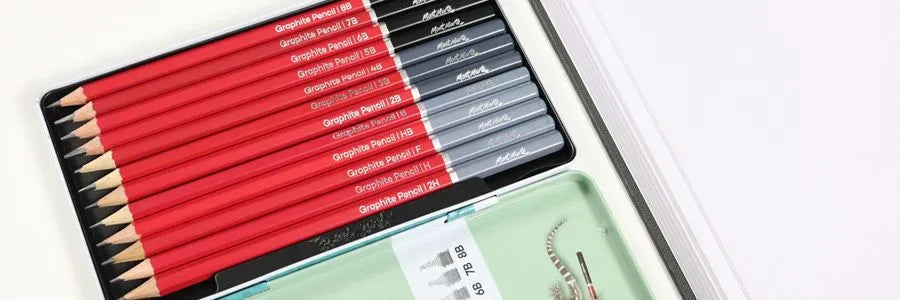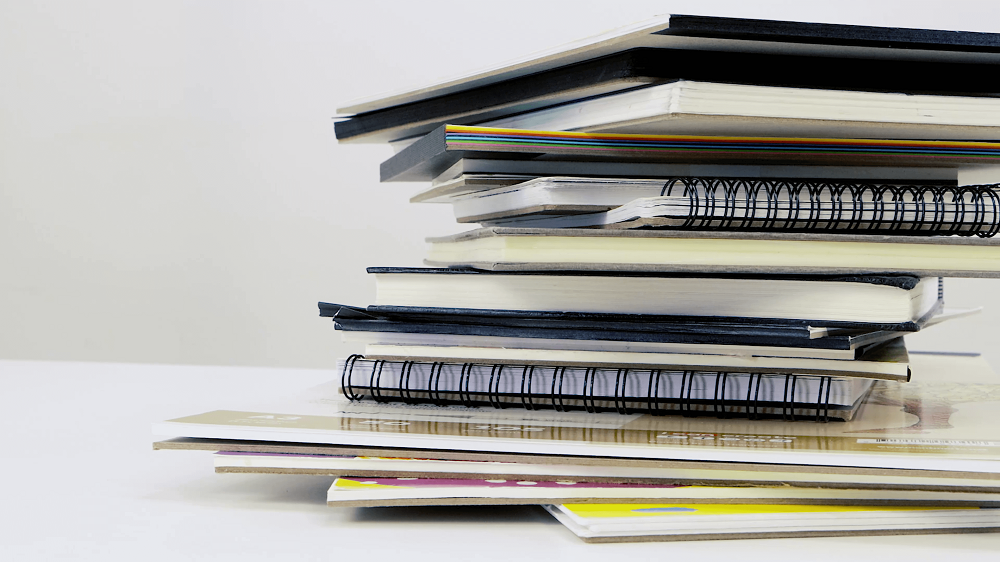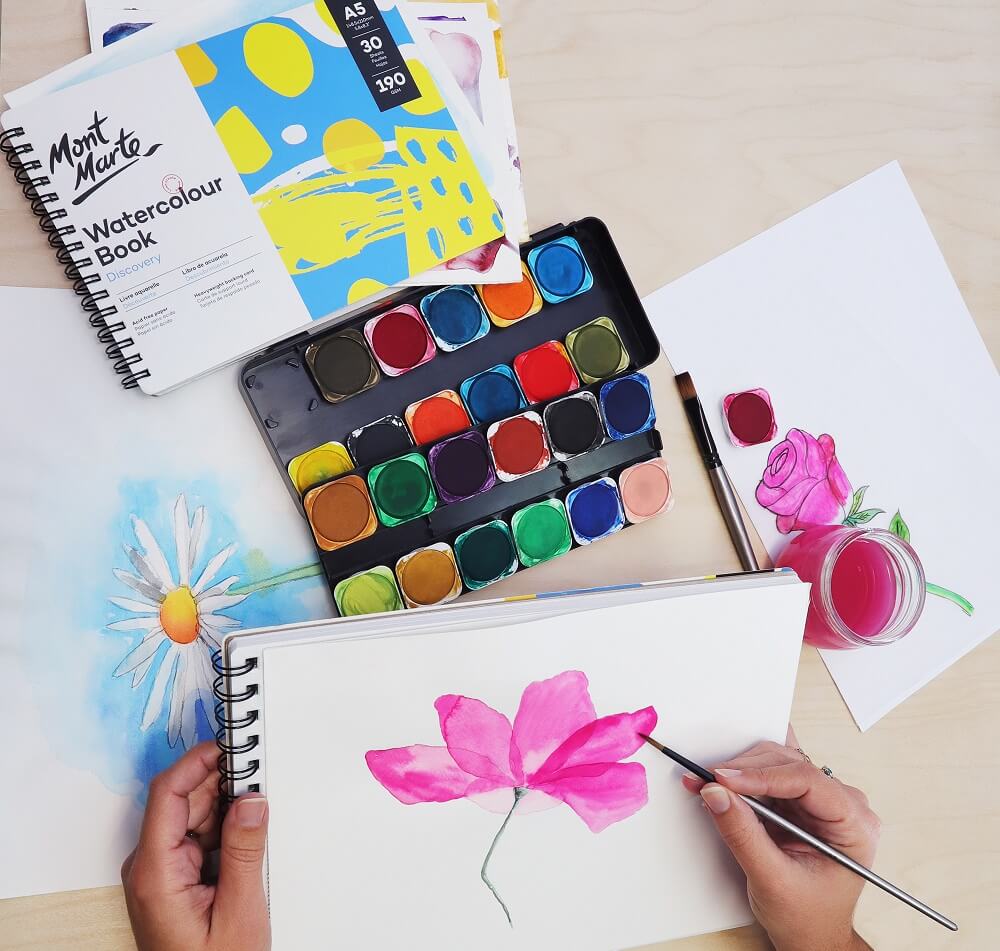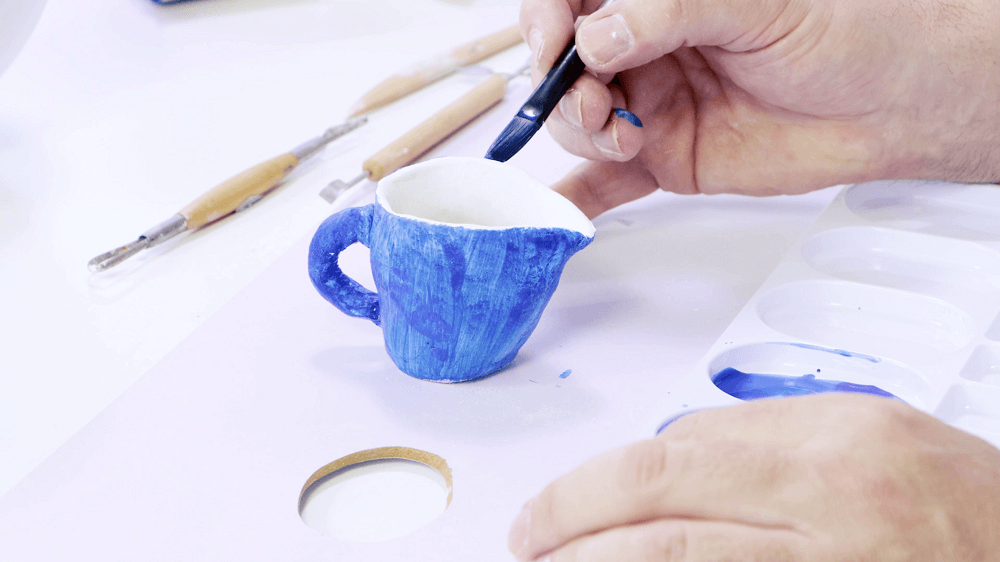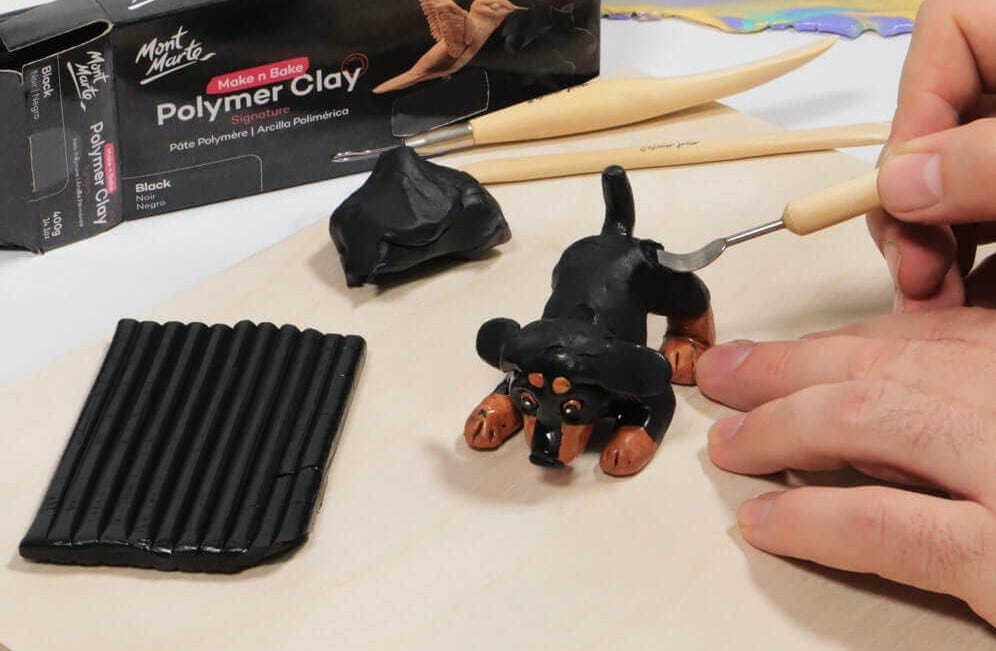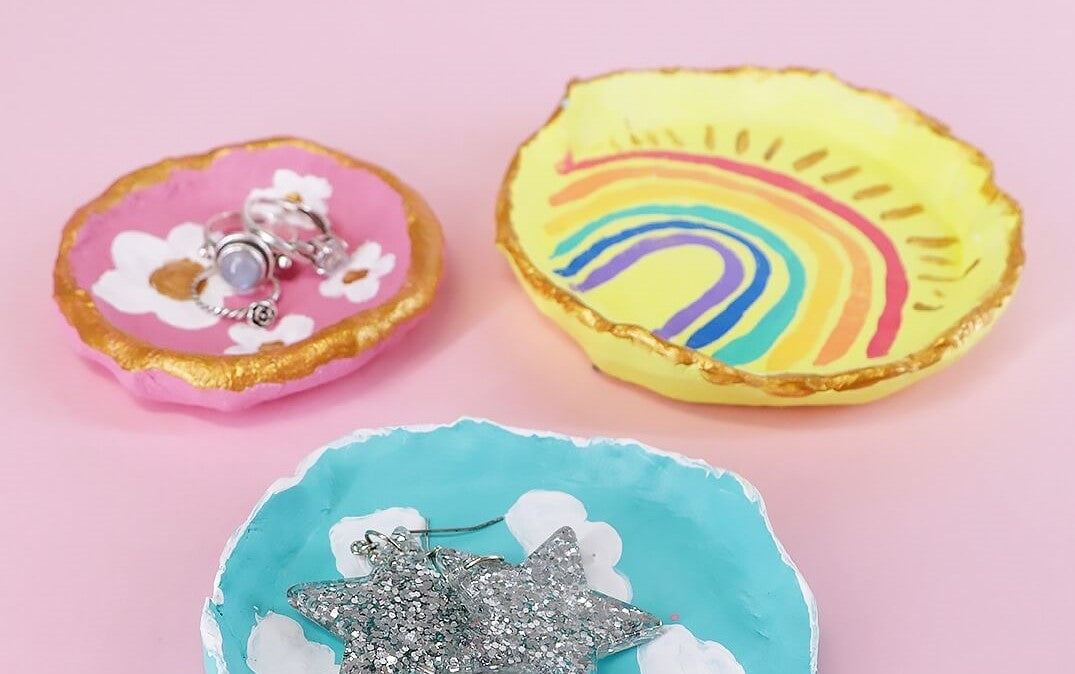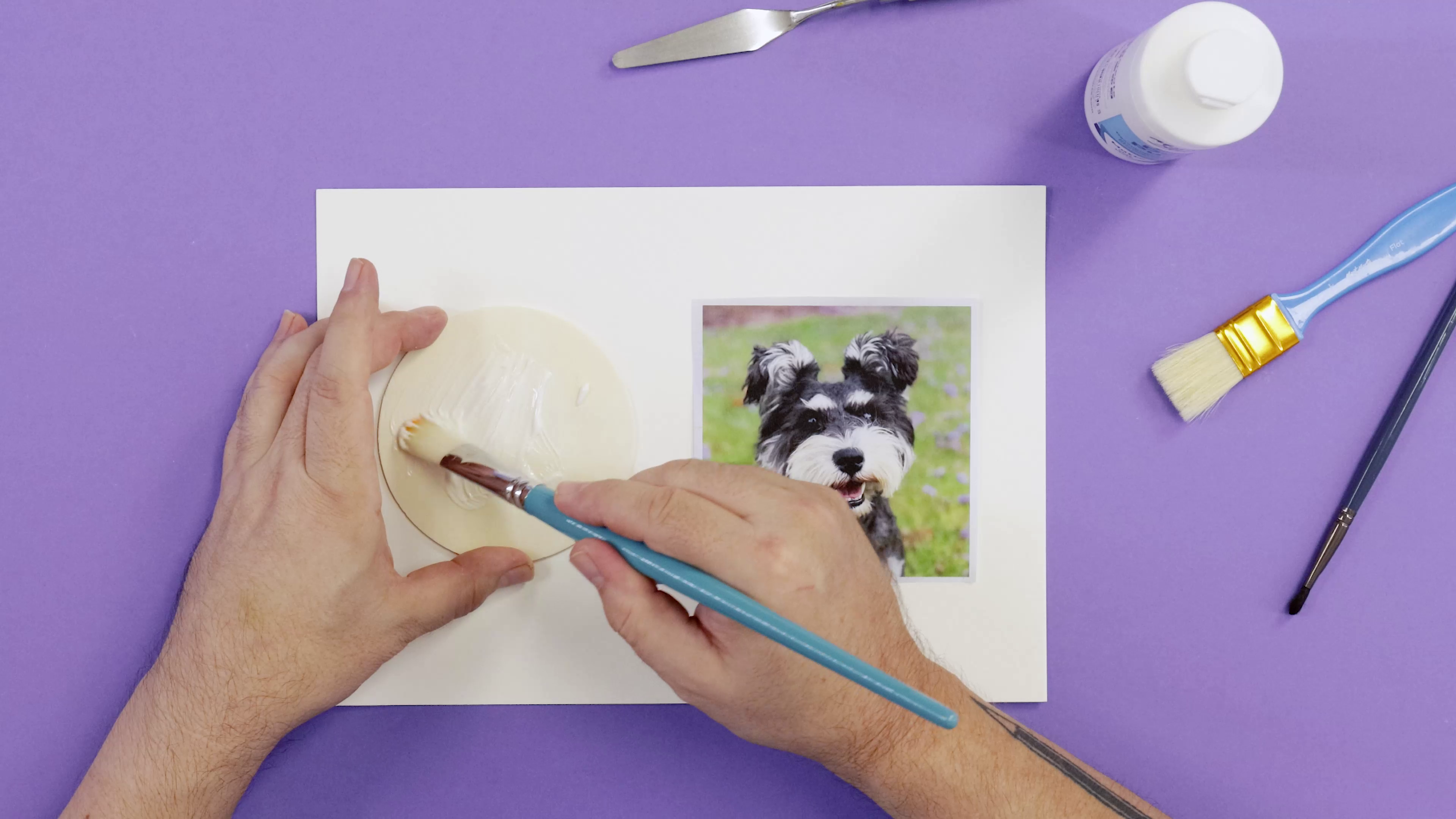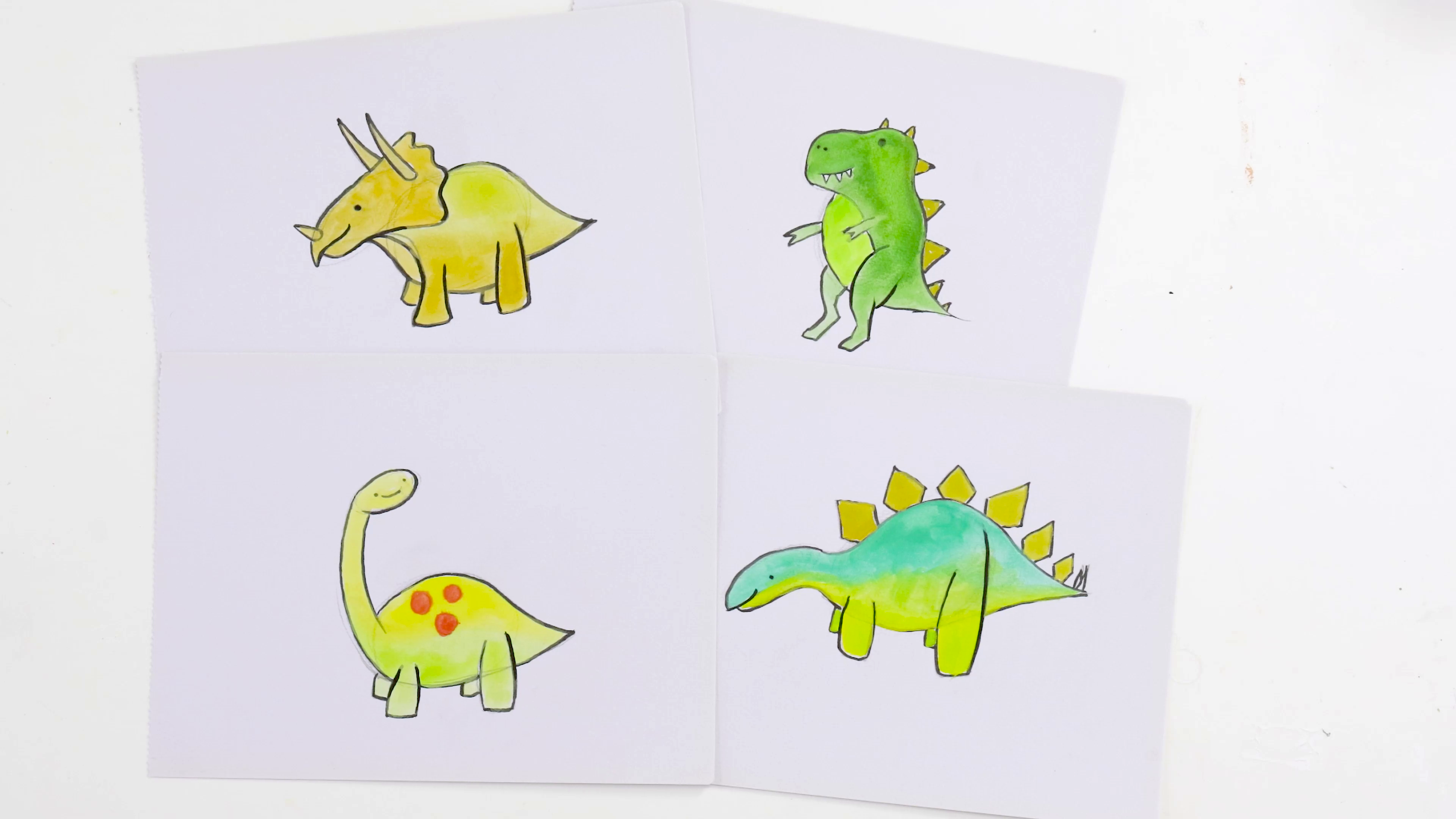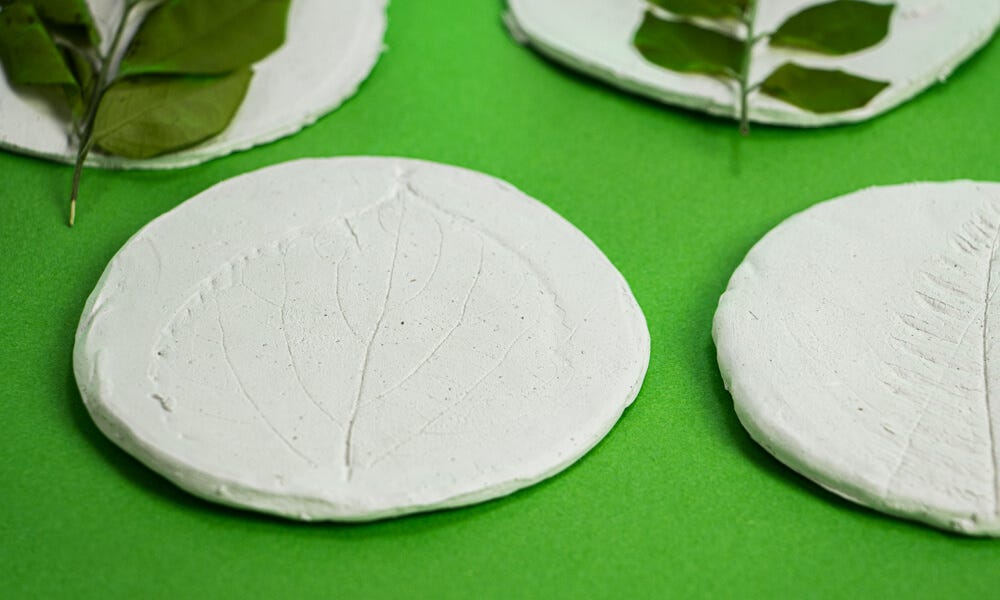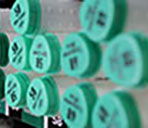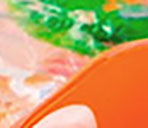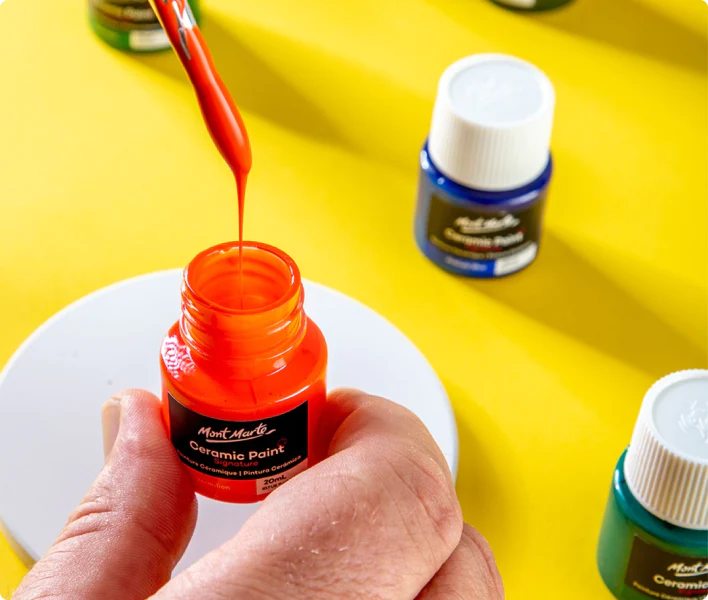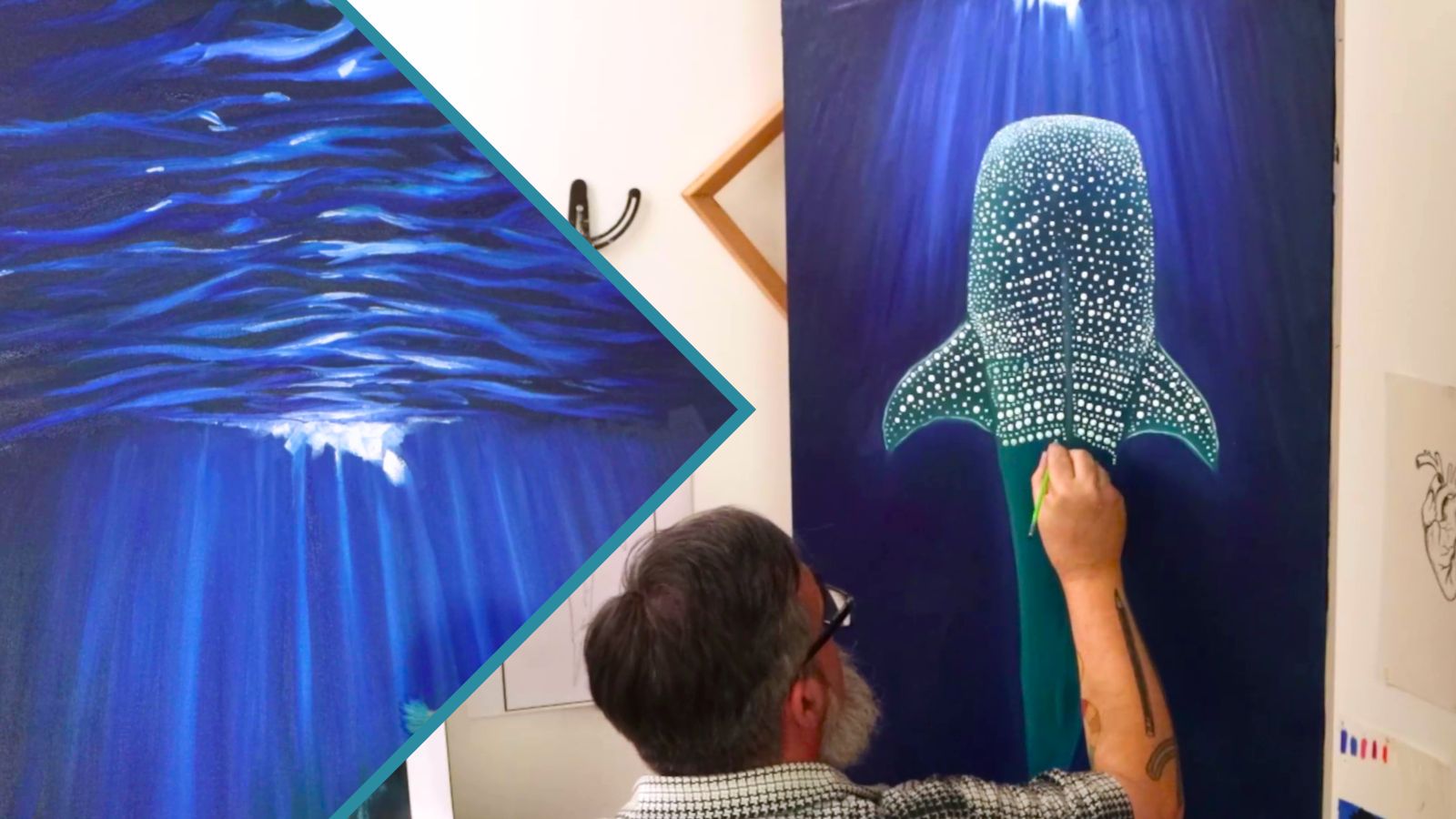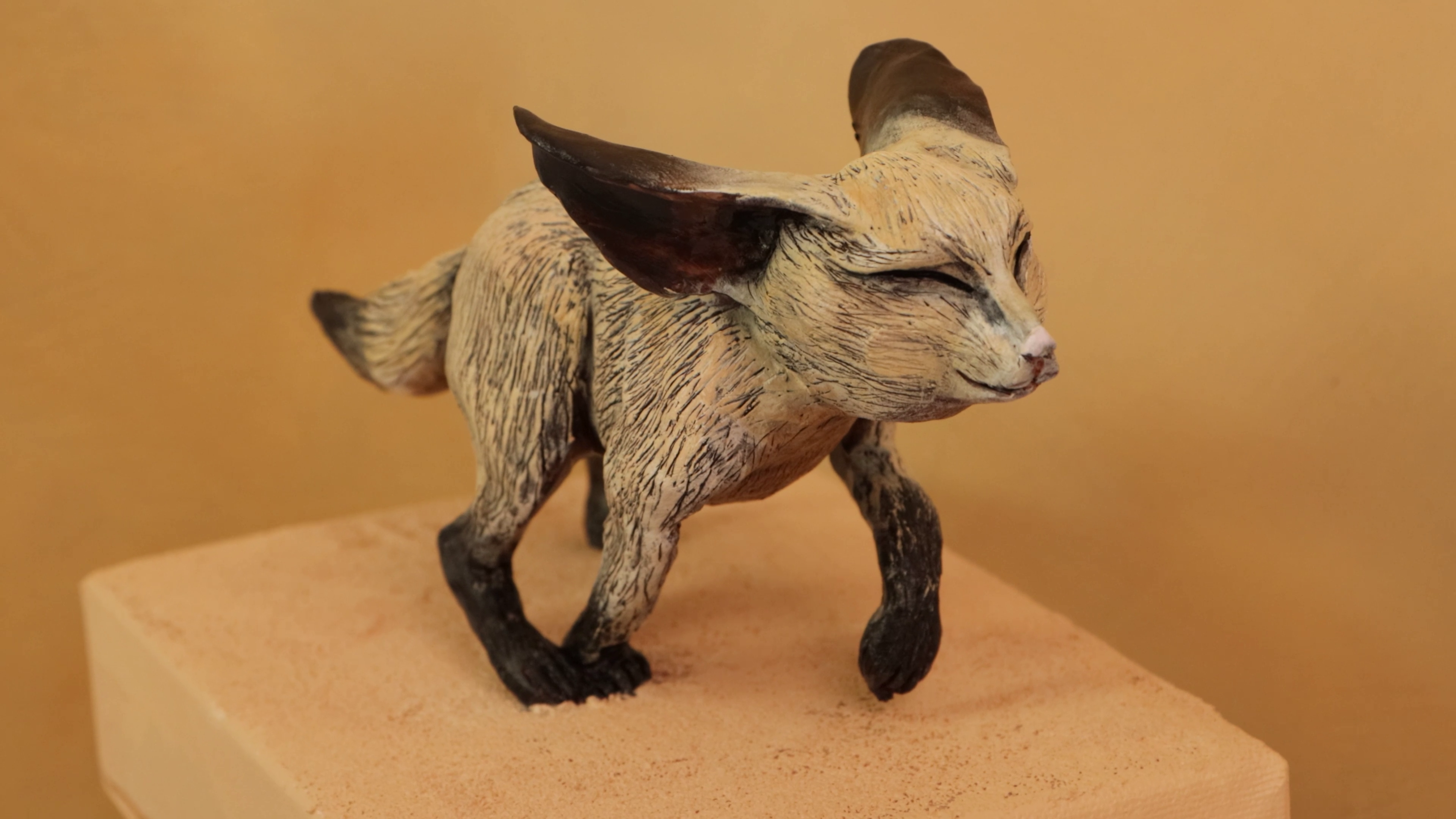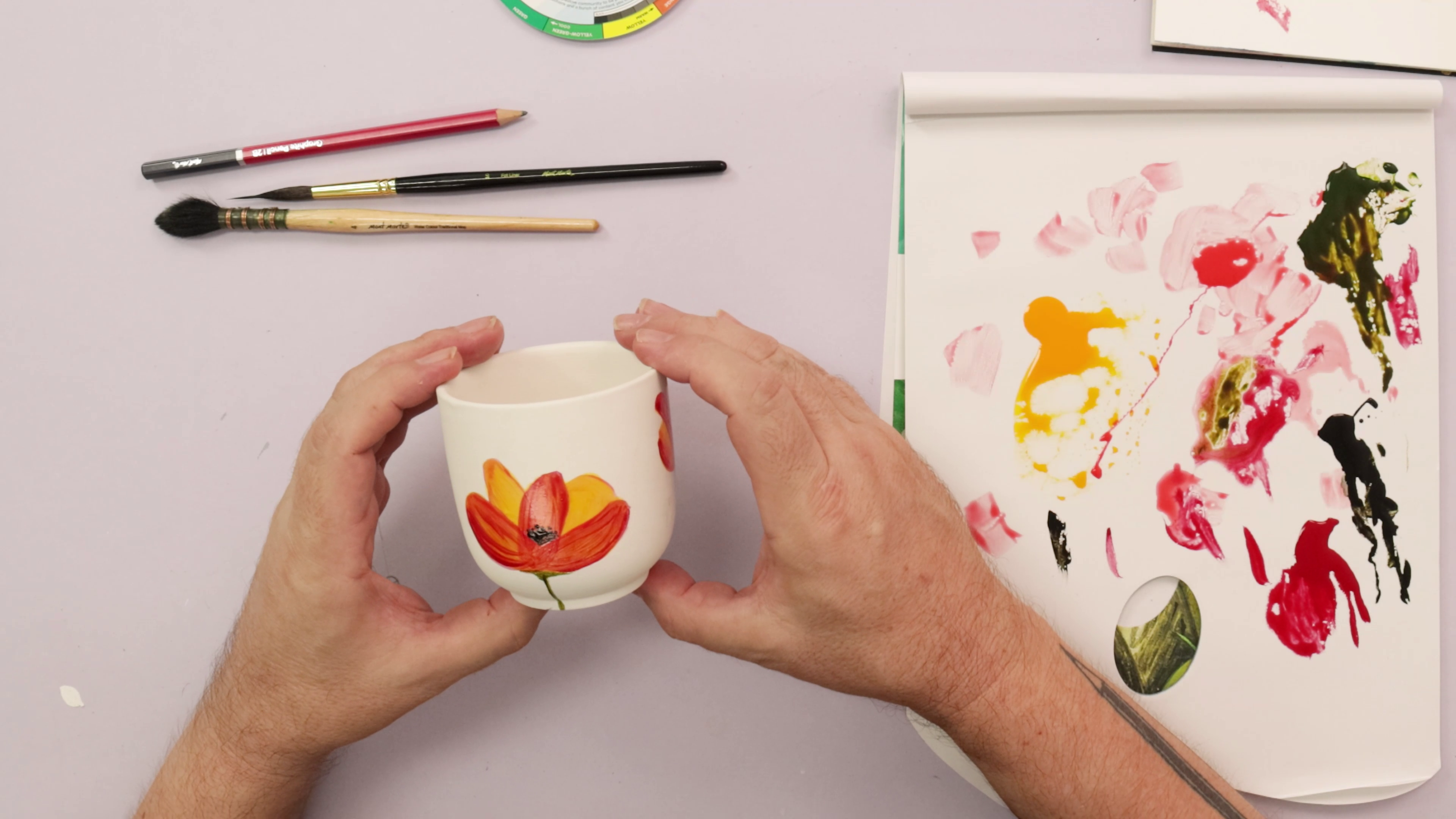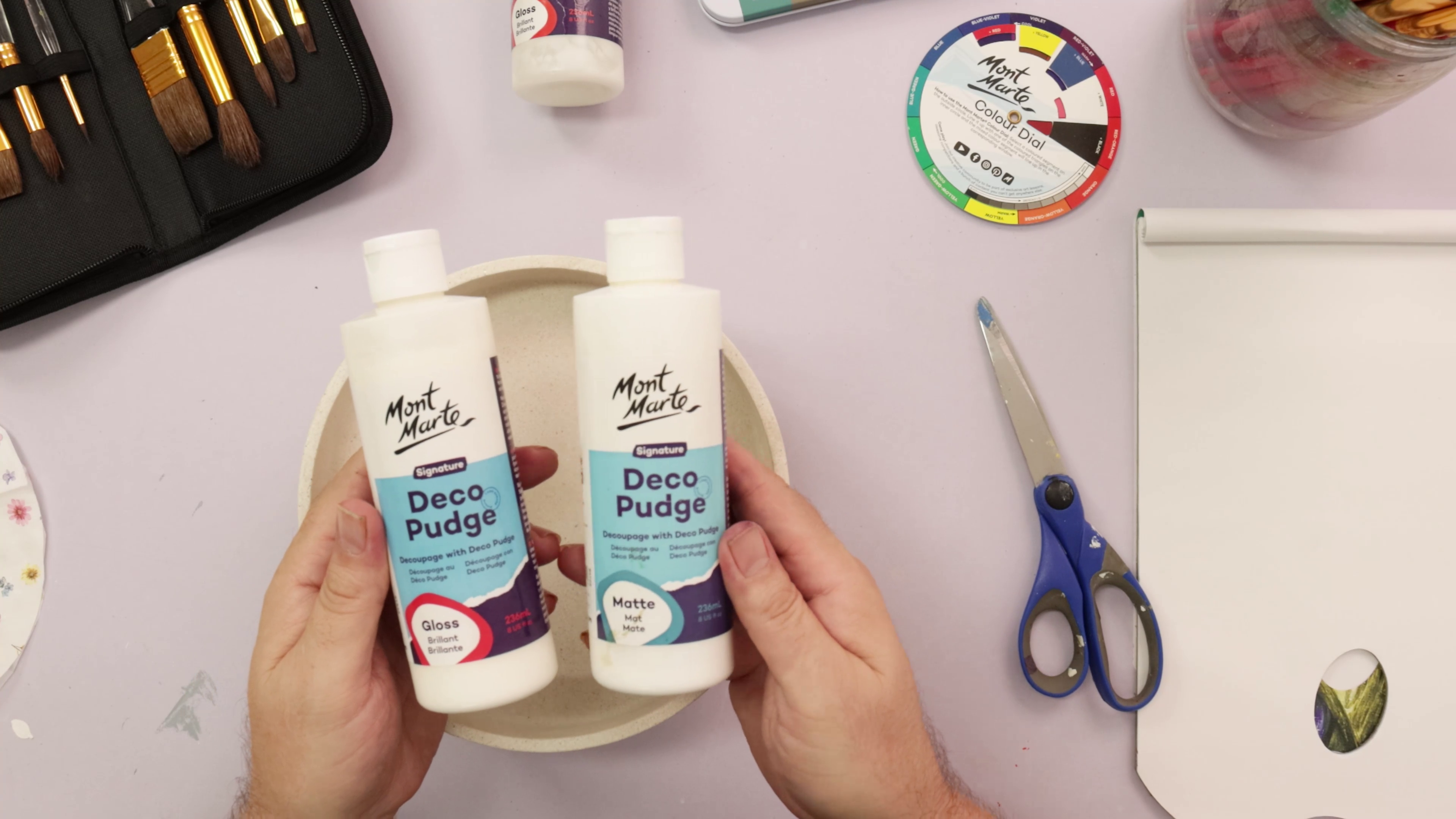Paint an easy moon with acrylics and oils

Firstly, it is recommended to put the keys into each corner as this project involves scumbling a lot of the tone on. This adds pressure on the canvas, so a taut canvas would be best.
Next, you can cover the canvas with a thin coat of Payne’s Grey Satin Series Acrylic and allow it to dry. Payne’s Grey is a good tone because it has a little warmth to it, unlike black which can be very stark.

Once your paint is dry, you can start by drawing the outline of the moon. A handy tip is to use a plastic bowl as a template. As the canvas is square (40 x 40cm) and the bowl used in this tutorial is 30cm in diameter, it works well with the size of the canvas.
You can then use a white charcoal pencil to draw the outline. Interestingly, the moon is not actually round and is classified as an oblate spheroid, meaning it has the shape of a ball that is slightly flattened. But, this not noticeable to the naked eye, so a round salad bowl template will work fine in this case.

Next, you can scrub in a few patches of Phthalo Blue onto the Paynes Grey, we recommend keeping the colour fairly subtle. You can then mix in some Yellow Ochre in areas. Although the moon is a grey colour, at certain times it reflects light and colour due to an optical phenomenon in our atmosphere, not the moon itself, or in other words just an apparent colour. It can also add more interest to the painting. Finally, allow these colours to dry before moving on.

Once dry, you can add a series of greys tones to model the moon, bearing in mind that our moon is quite round. The sunlight is emitting from the left of our moon, so the right side will be in shadow and the left side will be in highlight. So, you can squeeze out some Titanium White along with Mars Black to create a series of grey tones from very light to medium dark. We have supplied a tonal guide that you can find on our website if you would like to re-create this project.
You can add pure Titanium White at a later stage, but we suggest laying down some mid tones first. As you can lay Titanium White tone over the top of the moon, it is best to keep the coat as thin as you can as it is a lot harder to lighten thick dark paint.
The left edge can then be painted in first, but as this is in highlight we recommend keeping the tone light. As we mentioned earlier, a lot of this tone will be scumbled on. If you haven’t heard of the term ‘scumble’, it may sound like a funny word! It just means lightly charging your brush with paint and scrubbing the brush lightly over the surface of the canvas. This way you can slowly build up the tone with a lot of control. It creates a particularly nice look and the paint only sits on the high parts of the weave, giving an almost half-tone look to the application. You can refer to the reference printout and slowly build up the tones, paying special attention to the dark areas by giving them a very soft scumble with a light tone.

Once you are happy with the mid tones, you can lay on Pure Titanium White into any areas of highlight. You can start with the white on the top of the moon. If you need help, reference the image and work around the moon laying white into any places where you think it should be. Keep working over the moon adding small dots of white and details here and there.

Once all of the white is in, you can add some black into any craters and areas of deep shadow like on the dark side of the moon. We suggest being careful with the use of black as it can over-power an area.
To finish off your moon, you can lay the deep black of space in around the moon with Mars Black and wallah!
A lot of people wonder how the moon was formed and the most popular theory is that the Moon formed due to a collision between the Earth and another small planet, about the size of Mars called Theia. The debris from this impact collected in an orbit around Earth to form the Moon over millions and millions of years.
The Moon’s presence helps stabilize Earths wobble, moderates our climate and causes the tidal activity on earth.
The Moon is 385,000 kms from Earth and is actually moving away from earth at a rate of 3.8cms a year.
Material List
- Acrylic Brushes Signature 5pc
- Single Thick Canvas Discovery 40 x 40cm (15.7 x 15.7in)
- White Charcoal Pencils Lge Hex Signature 2pc
- Water Mixable Oil Paint 37ml (1.25oz) - Titanium White
- Water Mixable Oil Paint 37ml (1.25oz) - Mars Black
- Satin Acrylic Paint Premium 75ml (2.5 US fl.oz) Tube - Paynes Grey
- Satin Acrylic Paint Premium 75ml (2.5 US fl.oz) Tube - Phthalo Blue
- Satin Acrylic Paint Premium 75ml (2.5 US fl.oz) Tube - Yellow Ochre


